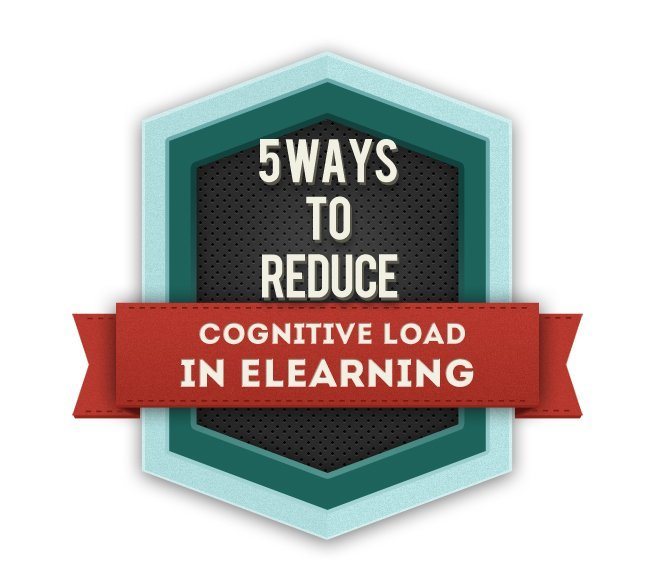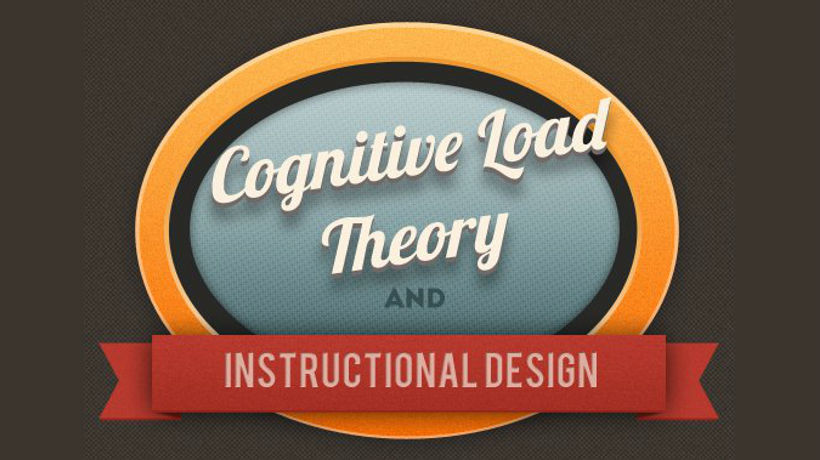How To Reduce Cognitive Load in eLearning
In our brains, we have two types of memory. One is our working memory, which we use to process new information. The capacity of our working memory is quite limited so it can only handle so much before it becomes overloaded. The second is our long-term memory, which is where we store information from our working memory and where we retrieve that information from later. Within our long-term memory, information is organized into schemas, which are organizational frameworks of storage (like filing cabinets). Not exceeding working memory capacity will result in greater transfer of information into long-term memory.
Cognitive Load Theory (CLT) proposes that there are three types of cognitive load:
- IntrinsicThis is the level of complexity inherent in the material being studied. There isn’t much that we can do about intrinsic cognitive load; some tasks are more complex than others so will have different levels of intrinsic cognitive load.
- Extraneous This is cognitive load imposed by non-relevant elements that require extra mental processing e.g. decorative pictures, animations etc. that add nothing to the learning experience.
- Germane These are elements that allow cognitive resources to be put towards learning i.e. assist with information processing.
The three types of cognitive load are additive so according to the theory, for instruction to be effective:
Intrinsic load + Extraneous load + Germane load < Working memory capacity
To assist learners in transferring information from their working memory to their long-term memory, we need to present the information in such a way that it reduces extraneous cognitive load (non-relevant items) and, if possible, increases germane cognitive load (items that assist with information processing). Note: I’ve found that much of the literature tends to focus on reducing extraneous cognitive load.Mayer and Moreno (2003) conducted research into ways to reduce cognitive load in multimedia learning. Their research, built on CLT, was based on three assumptions:
- Humans possess separate information processing channels for verbal and visual material (Dual Channel).
- There is only a limited amount of processing capacity available via the visual (eyes) and verbal (ears) channels (Limited Capacity).
- Learning requires substantial cognitive processing via the visual and verbal channels (Active Processing).
5 ways to reduce cognitive load in eLearning based on the findings of Mayer and Moreno
- Present some information via the visual channel and some via the verbal channel
If all of the content is processed visually i.e. via text, pictures or animations, the visual channel can become overloaded. Using narration transfers some of the content to the verbal channel thereby spreading the load between the channels and improving processing capacity. - Break content into smaller segments and allow the learner to control the pace
If the content is complex and the pace is too fast, the learner may not have enough time to effectively process the information. Breaking complex content into smaller chunks and allowing the learner to control the speed of the learning lets them to process the information more effectively. - Remove non-essential content
Background music and decorative graphics may appear to make the eLearning more interesting. However, these elements require incidental processing and increase extraneous load. If the content doesn’t support the instructional goal, it should be removed. - Words should be placed close as possible to the corresponding graphics
When text is located away from the corresponding graphic, learners are forced to scan the screen in order to align the text to the graphic which requires additional cognitive processing. Placing the text close to the corresponding graphic improves the transfer of information. - Don’t narrate on-screen text word-for-word
When on-screen text is narrated, the same information is presented to learners via both channels. Rather than spreading the load, learners are forced to process the same information twice which means that there is a great deal of redundancy. If using narration, the on-screen text should be a summary.
As instructional designers, we need to be aware of the cognitive requirements our designs impose and ensure that our learners can meet those requirements. We must also ensure that all aspects of our design focus on adding value to the learning experience.
References:
- Efficiency in Learning: Evidence-Based Guidelines to Manage Cognitive Load (2006) by Ruth Colvin Clark, Frank Nguyen and John Sweller. Pfeiffer
- Mayer, R. E. & Moreno, R. (2003). Nine ways to reduce cognitive load in multimedia learning. Educational Psychologist. 38, (1), 43-52.








